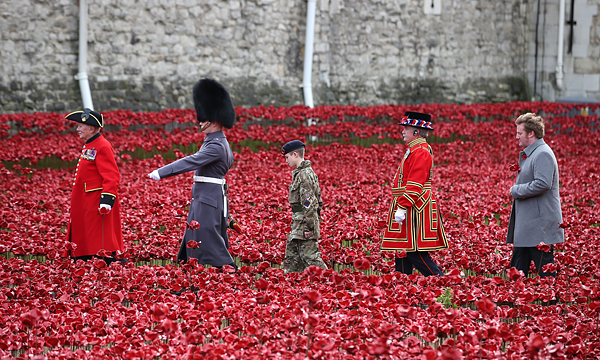Clayman Supplies Limited officially closed for business permanently on 22 August 2025.
Please note we will be fulfilling outstanding orders and admin over the coming weeks.

As Armistice Day approaches, we remember Paul Cummins' poppy installation
As far as art installations go, the Blood Swept Lands and Seas of Red at the Tower of London is as infamous as it was large.
From July 2014, no less than 888,246 ceramic red poppies progressively filled the moat of the Tower, each representing a British or Commonwealth soldier killed in service during the First World War.
The project was the brainchild of ceramic artists Paul Cummins, who pitched his idea directly to the Tower of London after he found inspiration in the will of a fallen soldier, which contained the line “the blood-swept lands and seas of red, where angels fear to tread”.
Remarkably, his pitch – which was only heard by the Tower’s Head of Operations because Cummins had been confused with another person by the same name – was accepted and the Tower enlisted the support of stage designer Tom Piper, who directed the ‘planting’ of the poppies over a four-month period.
The installation attracted over five million people to the capital for the First World War Centenary celebrations, among them the Queen, the Duke and Duchess of Cambridge, and Prince Harry, all of whom attended the Tower of London to pay their respects and remember the fallen.
And it wasn’t long before the accolades began to flood in.
Among the installation’s fans was the then Chairman of Arts Council England, Sir Peter Bazalgette, who said he thought the project would be remembered in 100 years’ time.
Some went as far as to suggest it should have been considered for the Turner Prize.
There were even calls by public figures such as the then Prime Minister, David Cameron, for the exhibit to be extended so more people could visit.
But there was criticism for it, too, and Cummins found himself on the receiving end of death threats after it was revealed the sale of the ceramic poppies – which were retailed to members of the public for £25 each – would benefit a number of military charities.
Producing the poppies also came at a price: Cummins lost the middle finger on his right hand when it was crushed in an industrial roller during the painstaking process to hand-make each of the poppies.
As the installation neared an end, over 8000 volunteers were drafted in to ‘pick’ each of the poppies, ready to send out to the 600,000 members of the public who had bought one.
The remainder of the installation – the poppies which formed the Weeping Willow, which cascaded out of the window of the Tower of London, and the Wave, which formed an arch over the entrance to the Tower – remained in place until the end of November 2014, at which point they were removed to tour around the country until 2018, when they will be displayed in the Imperial War Museums in London and Manchester.
Three years after the poppies were displayed at the Tower of London, a search has launched to trace the whereabouts of every poppy sold.
Paul Cummins’ career as a ceramic artist has also been grown “exponentially” as a consequence of the installation, and in 2015 he crafted an 8 metre high sculpture featuring 1500 ceramic tulips for the RHS Chelsea Flower Show, with the tulips eventually being sold on to members of the public via his website.
--
What did you make of Blood Swept Lands and Seas of Red – a moving tribute to those who served, or a disturbing celebration of conflict? Did you buy one of the ceramic poppies when the installation was dismantled? Are you a fan of Paul Cummins ceramic work? Let us know over on Facebook or Twitter.
 Facebook
Facebook Twitter
Twitter Pinterest
Pinterest ISSUU
ISSUU






